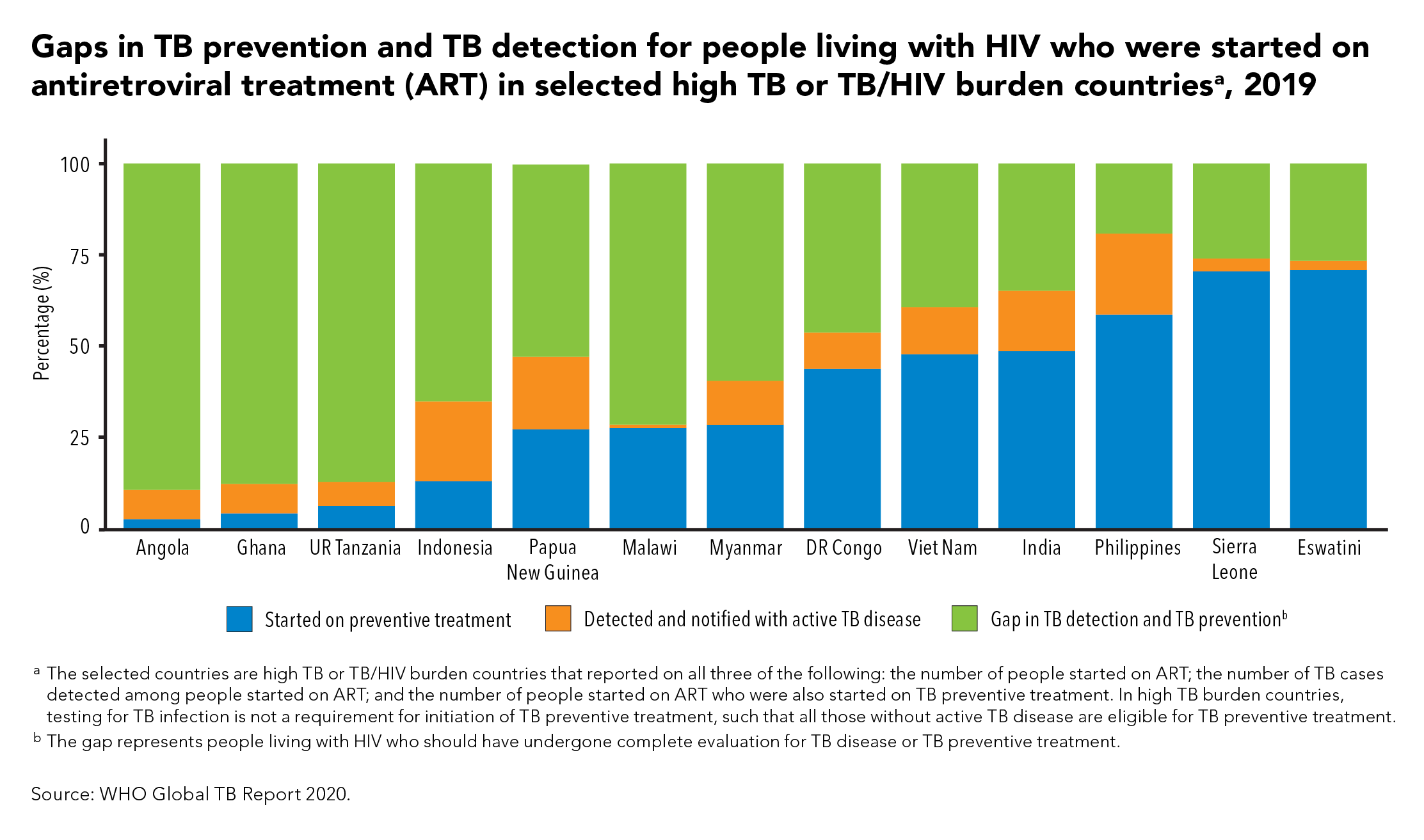Huge gaps in TB care for people living with HIV in some countries
All (100%) of people living with HIV newly started on antiretroviral therapy should receive either tuberculosis (TB) preventive treatment (blue bar) or TB treatment (orange bar)—together, they represent “optimal TB care”. The green bar shows the percentage of people newly started on antiretroviral therapy who did not receive optimal TB care and are vulnerable to falling ill or dying from TB.
All people living with HIV who are newly enrolled on antiretroviral therapy should receive “optimal TB care”—either TB preventive treatment or TB treatment. Since 2012, the World Health Organization has recommended that all people newly diagnosed with HIV should be screened for TB. If they do not have any symptoms of TB (cough, coughing up blood, fever, night sweats, weight loss, chest pain, shortness of breath or fatigue) they should receive TB preventive treatment. If they have any TB symptoms, they should be fully investigated for TB disease. If they are found to have TB disease, they should be started on TB treatment immediately. If there is no evidence of TB disease, they should be started on TB preventive treatment.
TB is the commonest cause of hospitalization and death among people living with HIV. In 2019, TB was responsible for 208 000 (30%) AIDS-related deaths. Yet, TB is curable and preventable. TB preventive treatment reduces the risk of developing TB disease and can reduce deaths among people living with HIV by almost 40%. Without treatment, a person living with HIV who has TB disease is likely to die.
Source: UNAIDS


